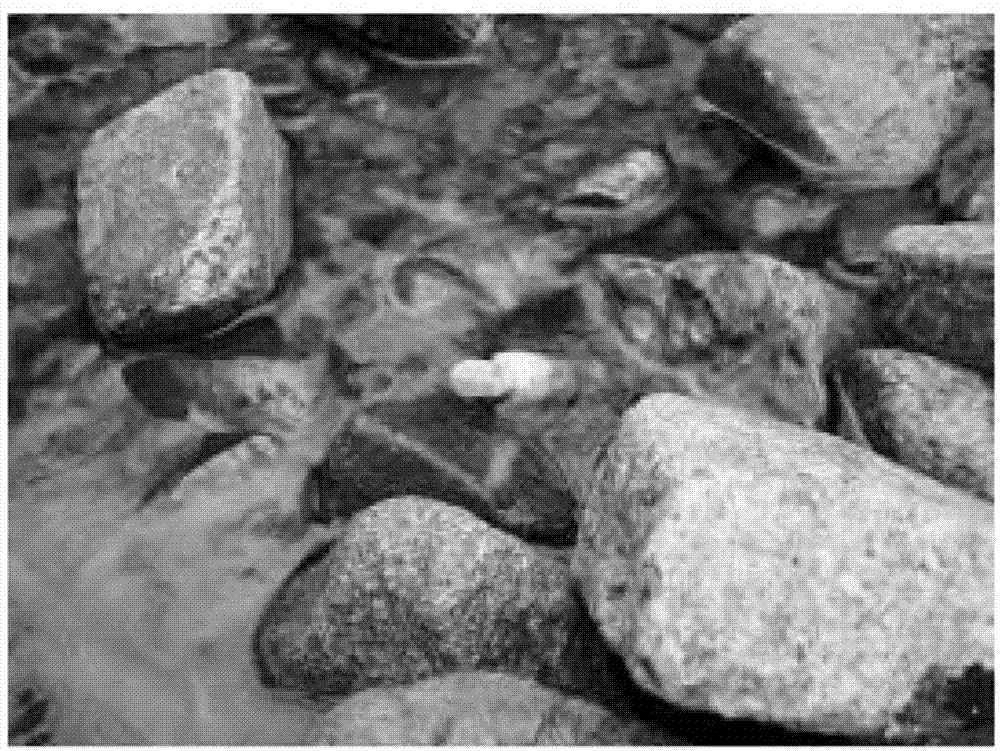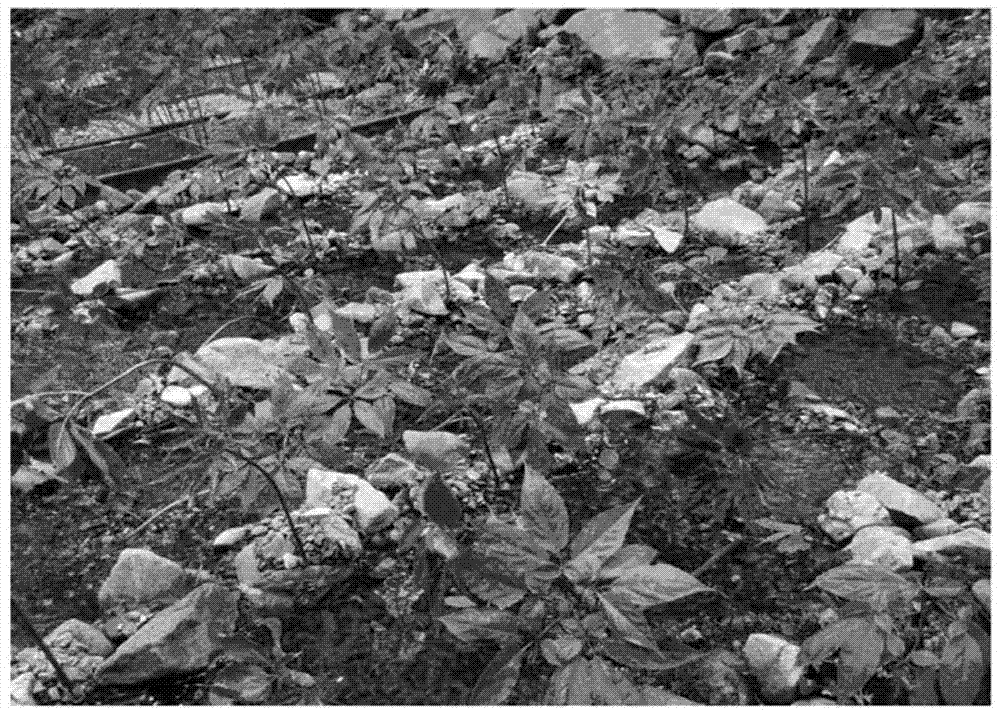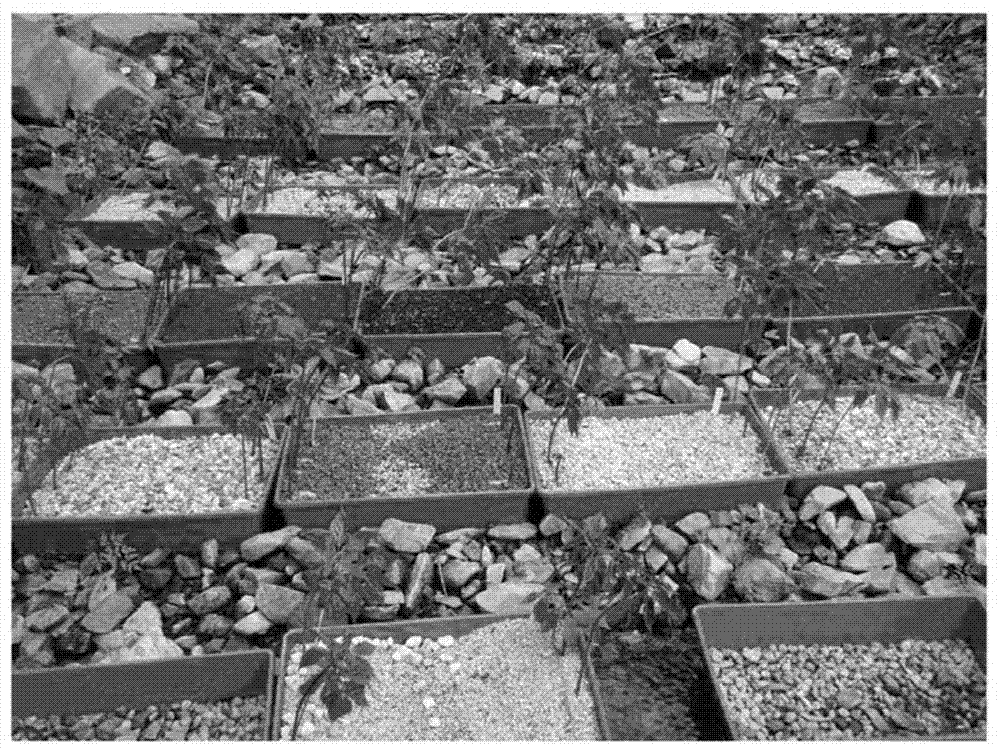Ginseng cultivation method
A cultivation method and ginseng technology, applied in cultivation, soilless cultivation, gardening methods, etc., can solve the problems of excessive pests, achieve the effects of preventing pests, reducing labor, and preventing continuous cropping obstacles
- Summary
- Abstract
- Description
- Claims
- Application Information
AI Technical Summary
Problems solved by technology
Method used
Image
Examples
Embodiment 1
[0052] Cultivation from seedlings (1):
[0053] In the valley of the upper reaches of the Nishiki River in Shimane Prefecture, Japan, look for a slope covered with trees and with an average illuminance of 30,000 lux or less per day. Here, river water with a yearly average temperature of 14°C is drawn in with a width of 2m, and set up The area where non-circulating water flows at a rate of 10 cm / s at a depth of 3 to 5 cm throughout the year. It should be noted that, for the flow rate of running water, place a piece of paper (material: general printing paper, size 3cm×3cm, weight 50mg) on the surface of the non-circulating running water where the culture bed is planned to be set, and measure 5 times within 5 seconds The flowing distance is obtained from this average value. Here, two-year-old ginseng seedlings with an average fresh weight of 8.3 g were placed obliquely in running water, covered with sand grains with a particle size of about 1 cm, fixed with gravel so that the ...
Embodiment 2
[0056] Continuous cropping test:
[0057] In the exact same place as the place where ginseng was cultivated in Example 1, 2-year-old seedlings of ginseng (average fresh weight: 8.2 g) were planted again and cultivated. After the seedlings were transplanted, management such as removing weeds, spraying pesticides, topdressing, etc. was not carried out at all, but deadness was not observed, and the average fresh weight grew to 14 g after 5 months. This shows that there is no problem even if ginseng is grown continuously in the same place.
Embodiment 3
[0059] Cultivation from seedlings (2):
[0060] In the same area as the area where ginseng is cultivated in Example 1, a flowerpot (30cm x 40cm x 10cm) with a hole in the bottom is placed, and large gravels with a diameter of 2 to 3cm and a depth of 2 to 3cm are spread inside it, so that Running water flows through this part. Add commercially available sand grains above it, add the chemical fertilizer of 2g of each flower pot, and the total depth is 10cm, and the cultivation bed is set. Two-year-old ginseng seedlings (average fresh weight: 8.3 g) were transplanted thereinto at such a depth that a part of the rhizosphere was immersed in water.
[0061] After the seedlings are transplanted, management such as weed removal and pesticide spraying is not carried out at all. The state of the seedlings 8 months after transplantation is as follows: image 3 shown. At this time, weeds grew slightly on the cultivation bed, but the growth of ginseng was vigorous, so it was negligible...
PUM
 Login to View More
Login to View More Abstract
Description
Claims
Application Information
 Login to View More
Login to View More - R&D
- Intellectual Property
- Life Sciences
- Materials
- Tech Scout
- Unparalleled Data Quality
- Higher Quality Content
- 60% Fewer Hallucinations
Browse by: Latest US Patents, China's latest patents, Technical Efficacy Thesaurus, Application Domain, Technology Topic, Popular Technical Reports.
© 2025 PatSnap. All rights reserved.Legal|Privacy policy|Modern Slavery Act Transparency Statement|Sitemap|About US| Contact US: help@patsnap.com



